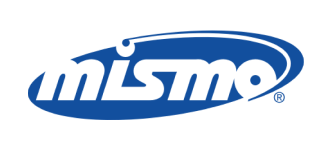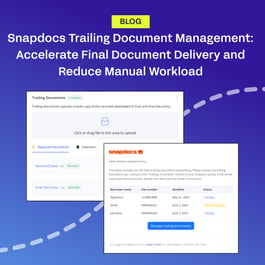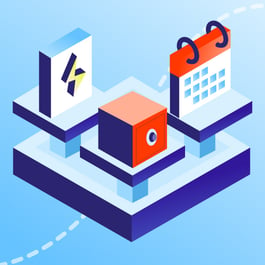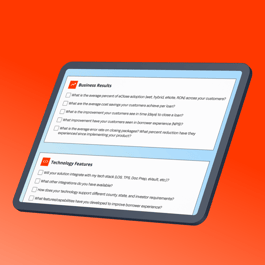This article is part of our educational series on the five key factors that determine how digital your mortgage closings can be, known as e-Eligibility.
For more information, download the full eBook or get your free e-Eligibility assessment to determine how digitized each loan in your portfolio can be.
Digitizing mortgage closings require lenders to ensure a solid understanding of e-Eligibility. But managing e-Eligibility—the factors that impact the extent to which a mortgage can be closed digitally—isn’t straightforward. For one, e-Eligibility factors are rapidly evolving. In addition, the data around e-Eligibility is fragmented across the industry.
Within the last year, one clear pattern has emerged—the mortgage industry is rapidly shifting toward fully digital closings, and borrowers and lenders alike are reaping the benefits. In 2020, the number of states that passed legislation to enable remote online notarization (RON) jumped from 10 to 30. Meanwhile, the number of electronic promissory notes (eNotes) registered on the MERS(r) eRegistry increased by more than 250% compared to 2019. Ginnie Mae also launched their eNote acceptance program, joining the ranks of other large investors, including Fannie Mae and Freddie Mac, that have been accepting eNotes for well over a decade.
The good news is that this forward momentum is beneficial for lenders, and for borrowers. As the industry advances, it’s more important than ever for lenders to feel confident in their ability to digitize. Lenders that offer digital closings must account for e-Eligibility throughout their entire lending process. From enabling loan officers to set borrowers’ expectations to managing the loan’s liquidity on the secondary market, e-Eligibility impacts nearly every part of the lending cycle. Accordingly, e-Eligibility must be woven into lenders’ policies and operational frameworks.
But, lenders face several obstacles to addressing the e-Eligibility of their loan portfolio
- Accessibility: e-Eligibility requirements are not readily accessible to lenders. The information for e-Eligibility is fragmented across trade association websites, industry publications, and counterparties’ policies or bulletins.
- Ambiguity: e-Eligibility requirements are not always clearly articulated. Often, lenders must interpret incomplete or vague requirements. In some cases, requirements can be circular, pointing to one or more requirements from multiple stakeholders—all of which need to be cobbled together to clarify the right outcome.
- Variability: e-Eligibility requirements aren’t always consistent across counterparties and stakeholders. They can vary based on numerous factors such as state, county, loan type, loan amount, and document type. For example, an investor might accept a RON closing using an out-of-state notary, while a title underwriter might require that the RON be performed by a notary licensed in the property state.
- Rate of change: e-Eligibility requirements across all factors are rapidly changing. Although these changes are typically net positive, the rate of change adds complexity for lenders attempting to keep pace.
- Actionability: After lenders gather e-Eligibility requirements, they still need to operationalize how they execute. This involves establishing policies and procedures to account for both external and internal e-Eligibility requirements. In addition, lenders must maintain system rules to avoid leaving their staff to interpret and manage complex e-Eligibility requirements on a day-to-day basis.
- Pitch: The closer a lender gets to “the bleeding edge” of digital mortgage closings, the stiffer the headwinds. To illustrate, a full eClosing involves the use of eNotes, eNotarization, and eRecording. This combination requires lenders to account for a range of e-Eligibility factors—with most outside of the lenders’ control.
While the challenges of achieving full closings digitization may seem significant, the benefits of overcoming these obstacles are well worth the effort. With time, resources, and planning, lenders can manage the challenges associated with e-Eligibility, and experience the significant operational and cost benefits of digital closings. However, it’s on lenders to keep up with the industry changes that impact the digital closing process.
To help lenders better address e-Eligibility, we’ve created “The 5 Rs” of e-Eligibility framework:
- Requirements
- Recording
- Restrictions
- Regulations
- Readiness
By organizing the e-Eligibility factors in their loan portfolio, lenders can better plan how they scale digitization in their closing process.
Have specific questions about the e-Eligibility of your closing process? We can help–get in touch. Or, download our eBook, The 5 Rs of e-Eligibility for Mortgage Closings.
Still researching what e-Eligibility is all about? Check out a few of our blog posts:
- Why Lenders are Digitizing Mortgage Closings Today
- The Five Rs of e-Eligibility when Digitizing Mortgage Closings




















